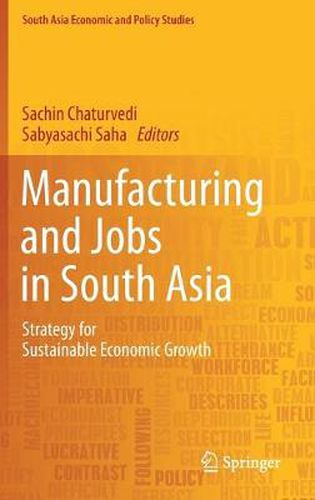Readings Newsletter
Become a Readings Member to make your shopping experience even easier.
Sign in or sign up for free!
You’re not far away from qualifying for FREE standard shipping within Australia
You’ve qualified for FREE standard shipping within Australia
The cart is loading…






This title is printed to order. This book may have been self-published. If so, we cannot guarantee the quality of the content. In the main most books will have gone through the editing process however some may not. We therefore suggest that you be aware of this before ordering this book. If in doubt check either the author or publisher’s details as we are unable to accept any returns unless they are faulty. Please contact us if you have any questions.
This book analyzes the structural factors that underlie the persistent mass poverty and extreme inequality in South Asian countries. It highlights the fact that the supposed trade-off between output growth and job creation is a false dilemma. Growth can create jobs, and jobs can drive growth, mutually reinforcing one another. Increased employment and better jobs would mitigate the problems arising from a widening inequality gap. The book argues that policies focused on employment generation, mostly through industrialization, are the way forward in terms of providing livelihoods, sustaining growth and reducing inequality.
The book is divided into two main parts. Part A explores cases in selected countries in South Asia in detail, primarily focusing on the opportunities and challenges of job creation in the manufacturing sector, as well as related issues, including constraints on manufacturing-sector growth in South Asia, exports and trade linkages, participation in value chains and the role of investment. In turn, Part B addresses a number of aspects that can promote a deeper understanding of strategies for industrialization and employment creation in the South Asian context, including regional cooperation, skill development, and industrial competitiveness. Gathering contributions from some of the region’s top minds, this book is of interest to scholars, researchers, policymakers and industry analysts alike.
$9.00 standard shipping within Australia
FREE standard shipping within Australia for orders over $100.00
Express & International shipping calculated at checkout
This title is printed to order. This book may have been self-published. If so, we cannot guarantee the quality of the content. In the main most books will have gone through the editing process however some may not. We therefore suggest that you be aware of this before ordering this book. If in doubt check either the author or publisher’s details as we are unable to accept any returns unless they are faulty. Please contact us if you have any questions.
This book analyzes the structural factors that underlie the persistent mass poverty and extreme inequality in South Asian countries. It highlights the fact that the supposed trade-off between output growth and job creation is a false dilemma. Growth can create jobs, and jobs can drive growth, mutually reinforcing one another. Increased employment and better jobs would mitigate the problems arising from a widening inequality gap. The book argues that policies focused on employment generation, mostly through industrialization, are the way forward in terms of providing livelihoods, sustaining growth and reducing inequality.
The book is divided into two main parts. Part A explores cases in selected countries in South Asia in detail, primarily focusing on the opportunities and challenges of job creation in the manufacturing sector, as well as related issues, including constraints on manufacturing-sector growth in South Asia, exports and trade linkages, participation in value chains and the role of investment. In turn, Part B addresses a number of aspects that can promote a deeper understanding of strategies for industrialization and employment creation in the South Asian context, including regional cooperation, skill development, and industrial competitiveness. Gathering contributions from some of the region’s top minds, this book is of interest to scholars, researchers, policymakers and industry analysts alike.